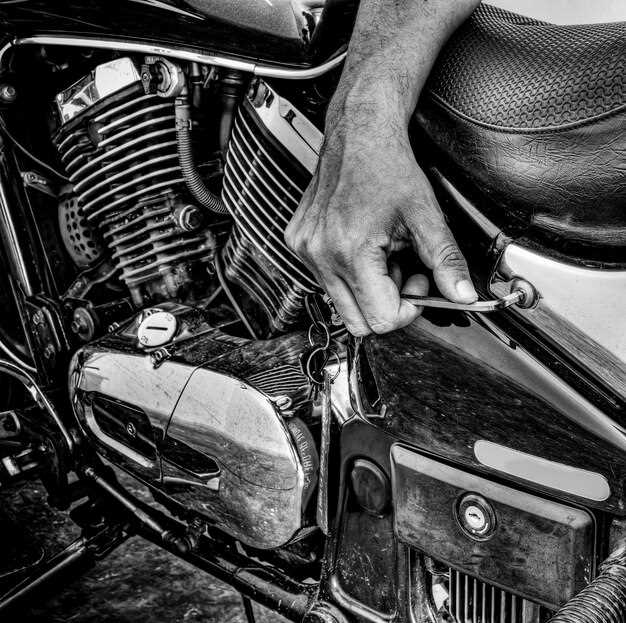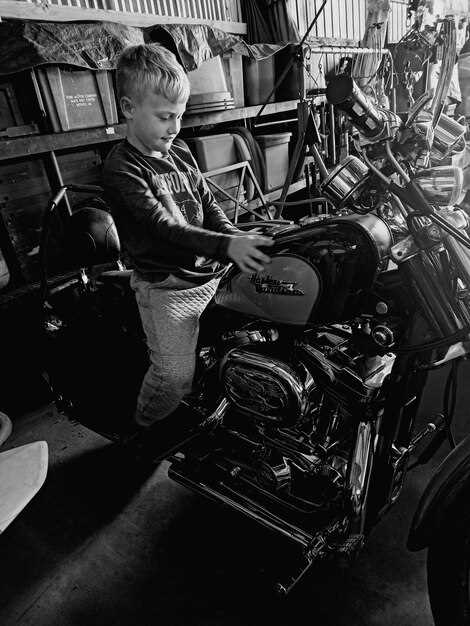

For enthusiasts of classic motorcycles, maintaining the integrity and performance of these iconic machines is essential for both safety and enjoyment. Regular maintenance and proper care can significantly extend the lifespan of your bike, ensuring that it delivers the exhilarating riding experience that classic motorcycles are known for. Whether you are a seasoned rider or a newcomer to the world of vintage bikes, understanding the fundamental aspects of motorcycle upkeep is crucial.
Classic motorcycles often require more attention than their modern counterparts due to their distinct engineering and materials. By implementing a consistent maintenance regimen, you can prevent common issues that affect performance and reliability. This includes everything from routine oil changes to brake inspections and tire maintenance. The goal is to keep your classic motorcycle in peak condition, preserving its charm and functionality for many years to come.
In this article, we will explore indispensable maintenance tips designed specifically for classic motorcycles. These guidelines will not only help you avoid costly repairs but also enhance your riding experience. With the right care and attention, your classic bike can remain a cherished part of your life, providing joy and nostalgia on every ride.
Regular Engine Oil Changes: Timing and Best Practices

Regular engine oil changes are crucial for maintaining the longevity and performance of classic motorcycles. Engine oil serves as the lifeblood of your machine, providing necessary lubrication and reducing wear on moving parts. Neglecting timely oil changes can lead to engine damage, costly repairs, and a shorter lifespan for your classic ride.
Timing is an essential aspect of oil maintenance. For classic motorcycles, it is generally recommended to change the oil every 2,000 to 3,000 miles, or at least once a year, whichever comes first. However, factors such as riding conditions, frequency of use, and the type of oil used can influence this interval. Always consult the owner’s manual for specific recommendations tailored to your motorcycle model.
When performing an oil change, adhere to best practices to ensure optimal results. Begin by warming up the engine briefly to thin the oil, which allows for better drainage. Afterward, locate the oil drain plug and ensure that you have a suitable container to catch the spent oil. Remove the drain plug and let the oil flow out completely.
Next, replace the oil filter if your motorcycle is equipped with one. Ensure that the new filter is compatible with your classic bike model, and apply a bit of new oil to the rubber seal to ensure a proper fit. Once the old oil and filter have been replaced, refill the engine with the recommended type and amount of new oil, checking the levels with the dipstick to avoid overfilling.
Finally, run the engine for a few minutes to circulate the new oil and check for any leaks around the filter and drain plug. Keeping a maintenance log can help track when oil changes were performed and condition monitoring for your classic motorcycle.
Regular attention to your motorcycle’s oil not only reflects care but also promotes efficient operation and prolongs the life of your cherished classic bike.
Maintaining the Electrical System: Tips for Longevity

Proper care of the electrical system is essential for the longevity of your classic motorcycle. Start by regularly inspecting the battery condition. Ensure the terminals are clean and free from corrosion. A well-maintained battery will provide reliable starting power and enhance overall performance.
Next, check the wiring harness for any signs of wear or damage. Look for frayed wires, exposed insulation, or loose connections. Repair or replace any damaged components promptly to avoid electrical failures that can lead to more significant issues.
Regularly test the charging system to ensure it maintains optimal voltage levels. Use a multimeter to check the output from the stator and regulator rectifier. If the voltage is inconsistent or below specifications, it may require attention to avoid draining the battery.
Ensure all electrical connections are tight and secure. Loose connections can cause erratic behavior of lights and gauges. Clean all contacts, applying dielectric grease to ensure a good seal against moisture and corrosion.
Examine the lighting system frequently. Replace any burnt-out bulbs and consider upgrading to LED lights for better visibility and reduced power consumption. Proper lighting is crucial for safety and can help extend the lifespan of your electrical components.
Lastly, invest in a quality voltage regulator. This component helps maintain stable voltage levels in the electrical system, protecting sensitive electronics from spikes that can cause damage. A reliable regulator contributes significantly to the overall health of your classic motorcycle’s electrical system.
Tire Care and Maintenance: Ensuring Safe Rides
Proper tire care is essential for maintaining the safety and performance of your classic motorcycle. Regular inspections can help identify issues before they become serious. Begin by checking the tire pressure, as improper inflation can lead to poor handling and increased tire wear. Use a reliable gauge to ensure your tires are inflated to the manufacturer’s recommended levels.
Next, examine the tread depth and condition of your tires. Adequate tread is crucial for optimal traction, especially in wet conditions. A tread depth of at least 2/32 of an inch is recommended for safe riding. Look for signs of uneven wear, which may indicate improper alignment or suspension problems.
Additionally, inspect the sidewalls for cracks, bulges, or other signs of damage. These defects can compromise your tires’ integrity and lead to blowouts. If you notice any abnormalities, consider replacing the tire immediately to ensure your safety on the road.
Rotating tires regularly is another important aspect of tire maintenance. This helps to promote even wear across all tires, extending their lifespan. Refer to your motorcycle’s service manual for suggested rotation intervals.
Finally, store your classic motorcycle properly to prevent tire degradation. If you plan to park your motorcycle for an extended period, consider using tire covers to shield them from UV rays and environmental factors. By following these tire care tips, you can ensure safe rides and enhance the longevity of your classic motorcycle.






